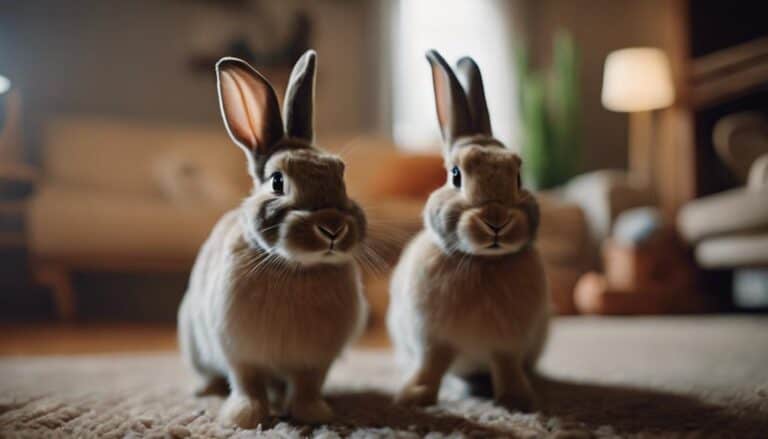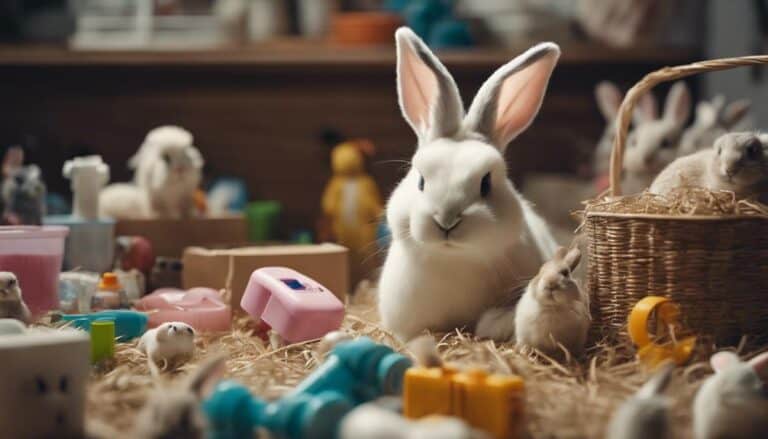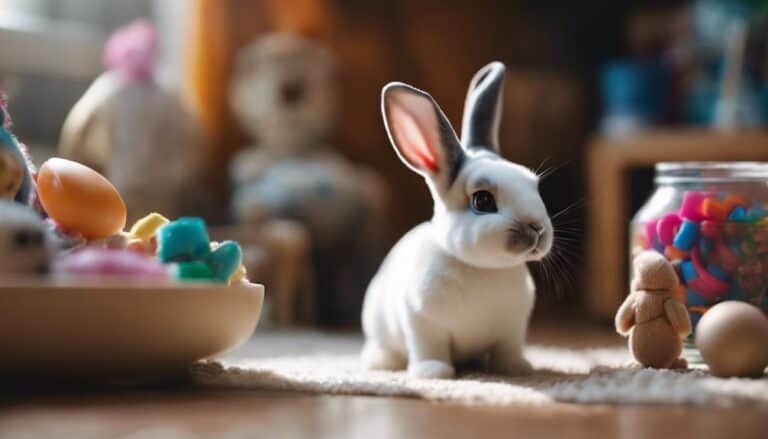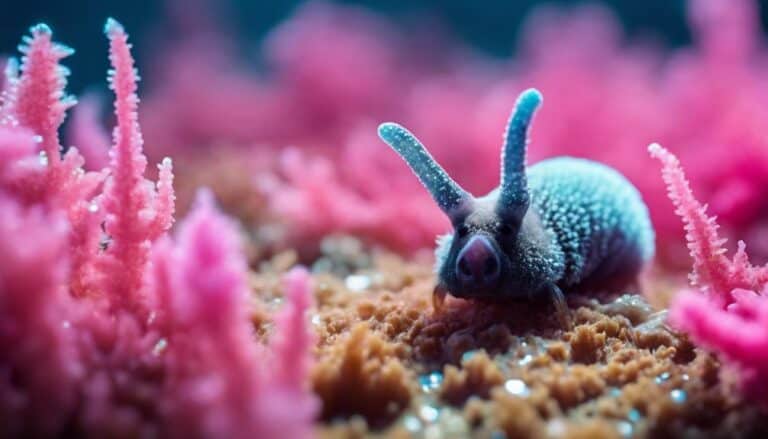So, you're wondering if a wild rabbit can mate with a domestic rabbit? Well, the answer is that they can, technically, but it's not very likely. Both wild and domestic rabbits belong to the same species, but they've developed some key differences over time.
The main issue is that domestic rabbits have undergone a lot of changes through breeding, which has affected their genetic makeup. This means that when you try to breed them with wild rabbits, their genetic differences can cause problems.
It's not impossible for them to produce offspring, but the chances of success are pretty low.
You might be curious about what would happen if they did produce hybrid babies. Unfortunately, these offspring often struggle with health issues or aren't very fertile themselves.
This is because their genetic mix can create conflicting traits that don't work well together.
So, while the idea of wild and domestic rabbits mating might seem interesting, the reality is that it's not a very common or successful practice.
But, if you're interested in learning more about rabbit breeding or the differences between wild and domestic rabbits, there's definitely more to explore!
Contents
- 1 Key Takeaways
- 2 Genetic Incompatibility Between Wild and Domestic Rabbits
- 3 Differences in European and North American Wild Rabbits
- 4 Risks of Introducing Wild Rabbits to Domestic Population
- 5 Challenges in Domesticating Wild Rabbits
- 6 Impossibility of Producing Viable Offspring
- 7 Considerations for Keeping Wild Rabbits as Pets
- 8 Conclusion
Key Takeaways
So, can a wild rabbit mate with a domestic rabbit? The short answer is, it's not very likely.
First, there are genetic differences between the two that make it difficult for them to produce viable offspring. The number of chromosomes is one major obstacle that hinders fertilization and embryo development.
Another issue is that wild rabbits have developed certain behaviors and instincts that make it challenging for them to mate with domestic rabbits. These instincts are shaped by their natural environment and are quite different from those of domestic rabbits.
Additionally, the reproductive cycles of wild and domestic rabbits often don't align, which means the timing is off. This makes it even more difficult for them to successfully mate.
If you're considering keeping a wild rabbit as a pet, it's essential to understand their unique needs and behaviors. They require a very different kind of care compared to domestic rabbits, and it's crucial to be aware of these differences before bringing a wild rabbit into your home.
Genetic Incompatibility Between Wild and Domestic Rabbits
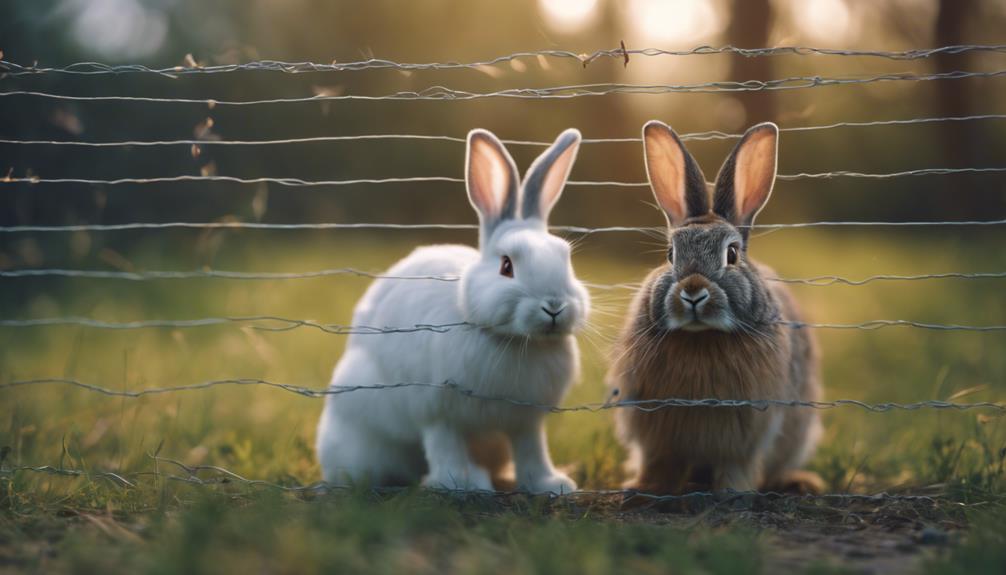
Wild and domestic rabbits just can't seem to get along when it comes to breeding. The reason for this is that they've developed in different ways over time, leading to some pretty significant genetic differences.
Domesticated rabbits have been bred by humans for thousands of years to be friendly, come in all sorts of colors, and have specific body shapes. Wild rabbits, on the other hand, have evolved to survive in their natural habitats. They've developed sharp senses, agility, and camouflage abilities to stay alive.
These differences make it tough for wild and domestic rabbits to produce healthy offspring. While it's not impossible for wild and domestic rabbits to have babies, their hybrids often face big health problems and reproductive issues.
This is because their genetic makeup is just too different. So, it’s essential that we understand and respect these genetic boundaries to protect both wild and domestic rabbit populations. By acknowledging these genetic boundaries, we can avoid unintended consequences that could arise from crossbreeding different rabbit species. A rabbit family tree overview highlights the diverse branches within the rabbit lineage, showcasing the unique traits and adaptations that have evolved over time. Preserving these distinctions is crucial, not only for the health of wild rabbit populations but also for the well-being of domesticated breeds.
Differences in European and North American Wild Rabbits
So, let's talk about the differences between European and North American wild rabbits.
These two species have some pretty distinct physical and behavioral characteristics that set them apart in their respective environments.
First off, European wild rabbits, also known as Oryctolagus cuniculus, are bigger than their North American cottontail cousins.
They've also got a grey-brown fur color, whereas North American cottontails have a reddish-brown fur with a white fluffy tail that looks a lot like a cotton ball.
When it comes to behavior, European wild rabbits are pretty social.
They live in colonies and build intricate burrow systems for protection and breeding.
North American cottontails, on the other hand, are more solitary and build simple nests above ground.
These differences in behavior are basically adaptations to the different environmental pressures each species faces in their native habitats.
It's also worth noting that there are some big differences between wild rabbits and domestic rabbits.
Domestic rabbits have been selectively bred over generations for specific traits, which has led to some pretty significant variations in terms of size, coat color, and behavior compared to their wild counterparts.
Risks of Introducing Wild Rabbits to Domestic Population
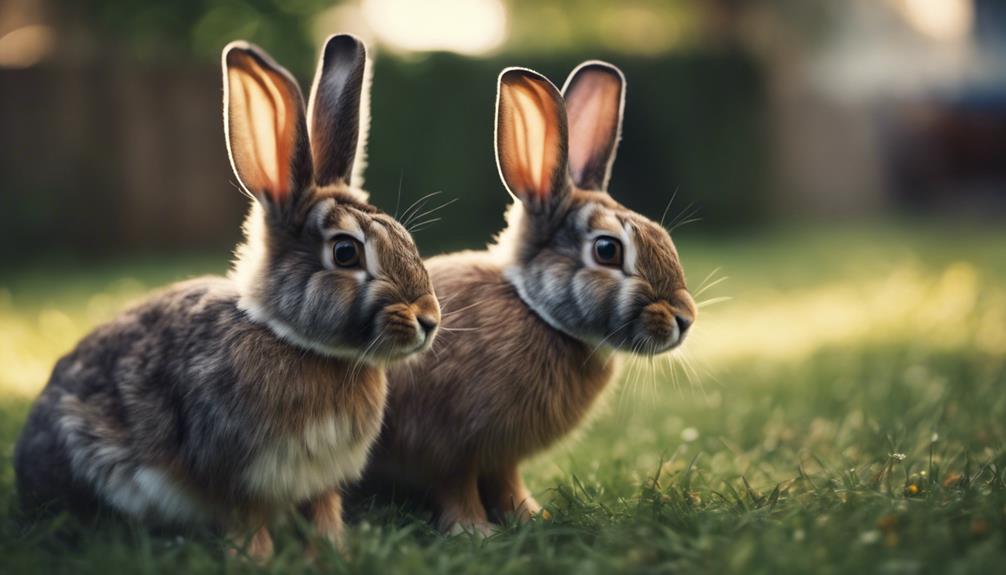
Introducing wild rabbits to the domestic population can be a risky move. These two groups of rabbits have evolved separately, which means they've different immune systems and are susceptible to different diseases.
When they mix, there's a high chance that diseases from wild rabbits will spread to domestic rabbits, causing a lot of illness and even death. For example, wild rabbits may carry pathogens that domestic rabbits have no immunity against.
Another issue is that breeding between wild and domestic rabbits can lead to genetic contamination. This means that the desirable traits we've bred into domestic rabbits over the years could be lost. Domestic rabbit breeds may lose specific traits through breeding with wild rabbits.
Lastly, introducing wild rabbits can disrupt the local ecosystem. Since wild rabbits are adapted to a specific environment, they might outcompete domestic rabbits for resources like food and shelter, changing the balance of the ecosystem.
Disease transmission, genetic contamination, and ecological imbalances are the three main risks of introducing wild rabbits to the domestic population.
Challenges in Domesticating Wild Rabbits
Domesticating wild rabbits is a tough task because of how different they're from domesticated rabbits in terms of behavior and physiology.
Wild rabbits have evolved to survive in the wild, which makes them super skittish and prone to bolting when they feel threatened. This means they're not too keen on humans and can get really stressed out in captivity.
On the other hand, domesticated rabbits have been bred over many generations to be friendly and easy to handle, making them a great fit for living with humans.
One of the major challenges is trying to breed wild rabbits with domesticated ones.
For starters, wild rabbits have a different breeding season than domesticated breeds, which can lead to some pretty awkward mismatches when it comes to mating.
And to make things worse, wild rabbits can get pretty aggressive during mating, which is a major problem when you're trying to integrate them into a domestic breeding program.
Impossibility of Producing Viable Offspring

It all comes down to genetic incompatibilities.
When we look at the genetic makeup of domestic rabbits and wild cottontails, there are several factors that make it nearly impossible to produce viable offspring.
Domestic rabbits and wild cottontails have different numbers of chromosomes. This makes it unlikely for fertilization and embryo development to be successful.
Wild rabbits have instincts and behaviors that are quite different from domestic rabbits. This impacts their ability to mate successfully.
The reproductive cycles of wild cottontails and domestic rabbits are also distinct, with different breeding readiness, which leads to mismatches in their reproductive timing.
Over generations, wild rabbits have evolved specific genetic adaptations for survival that may not align with the genetic traits of domestic rabbits. These adaptations can further complicate the possibility of producing viable offspring.
Considerations for Keeping Wild Rabbits as Pets
So, you want to keep a wild rabbit as a pet? That's a big decision, and it's crucial to understand what you're getting yourself into.
Wild rabbits, especially those in North America, might seem like an exciting pet option due to their wild nature. However, it's essential to recognize that they've unique needs and behaviors that differ significantly from domestic rabbits.
For instance, wild rabbits are naturally more skittish and territorial than domestic breeds. This means you'll need to be patient and understanding when caring for them.
Their diet is also vastly different – they mainly eat grasses and leafy greens, unlike the pellet-based diet of many domestic rabbits.
To give your wild rabbit a happy and healthy life, you'll need to create an environment that mimics their natural habitat. This is crucial for their physical and psychological well-being.
Conclusion
So, can a wild rabbit mate with a domestic rabbit?
The short answer is no, and here's why.
When you think about it, wild and domestic rabbits are like two different species.
They've developed distinct genetic differences over time, which makes interbreeding a bad idea.
Imagine trying to mix oil and water – they just don't mix.
If you were to mate a wild rabbit with a domestic rabbit,
the offspring would likely face serious health risks.
That's because their genetic makeup would be a mix of two very different breeds,
and that can lead to all sorts of problems.
The best thing to do is appreciate wild and domestic rabbits for who they're –
separate and unique in their own habitats.
By doing so, we can ensure the health and well-being of both types of rabbits.

